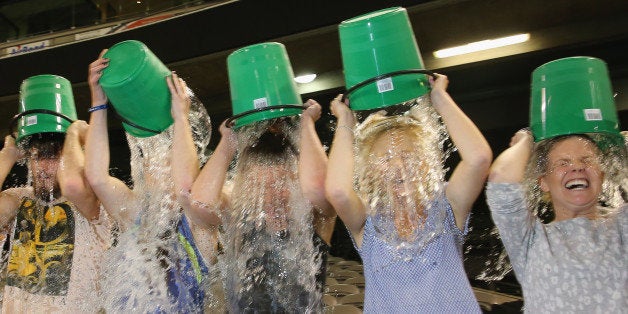
As a public health advocate, I was ecstatic to watch the "Ice Bucket Challenge" social media campaign raise for ALS. Over the past two and half weeks, the ALS Association earned over 13 million dollars in donations. Last year, during the same period, the ALS raised a paltry $1.7 million in comparison. The viral campaign, sparked by the heartfelt plea of a college baseball player, Pete Frates, grew funding exponentially.
At the risk of stating the obvious -- money is essential for biological research. Even the most basic experiments require reagents, laboratory space, laboratory equipment and personnel. The more funding scientists have, the more work they can do. At certain junctures, greater funding allows for greater experimental risks that may lead to unexpected breakthroughs. There is no question that increasing funding for scientific research is an essential and useful step in finding cures to diseases such as ALS.
However, the way we raise money for scientific research is perhaps as important as the money we raise. Historically, successful fundraising campaigns have included celebrities afflicted with the disease (Michael J. Fox and Parkinson's as an example) or the emotional pull of diseases that affect a large proportion of the population (Susan G. Komen and breast cancer as another example.) Fundraising rests heavily on tugging at someone's heartstrings and causing empathy -- yet the money is focused toward benefiting a scientific, rigorous process.
This dichotomy between the emotional nature of fundraising and the academic targets of donation was exceedingly clear during the Ice Bucket Challenge. Peer pressure to participate in a good cause increased as more celebrities and icons joined the challenge. Millions of people who participated all announced their support for finding a cure for ALS during their videos, and yet a substantial amount may not be able to accurately describe ALS and the symptoms of the disease. For the curious, there is wonderful curriculum on ALS available through NINDS (National Institutes of Neurological Disorders and Stroke).
The ALS social media movement will be analyzed, studied and debated for years to come as a precedent for successful fundraising. There will be lessons and questions for foundations, influencers and policy makers. For the scientific community the big question will be: is it enough for us to popularize our causes in a lighthearted way to raise funding? Or is this a wasted opportunity to educate the public in a way that might actually yield more than simply monetary crowd funding? What about intellectual crowd funding? What about awareness of clinical trials in ALS or genetic marker studies? The challenge may be that these kinds of educational things don't have the widespread popularity of something easy to understand- like an ice bucket on your head to raise awareness. However, with some creativity, perhaps we can engage the public with more than just a fun stunt, and make the most of the tremendous platforms we have within social media.
It is critical to acknowledge that the awareness battle doesn't end with research funding, it continues beyond into investment capital, FDA trials, drug production, and market strategy. A drug developed for ALS today could take up to twenty years to get to market. YouTube views, retweets and more ice won't change that -- but moving beyond general awareness to education and engagement will.